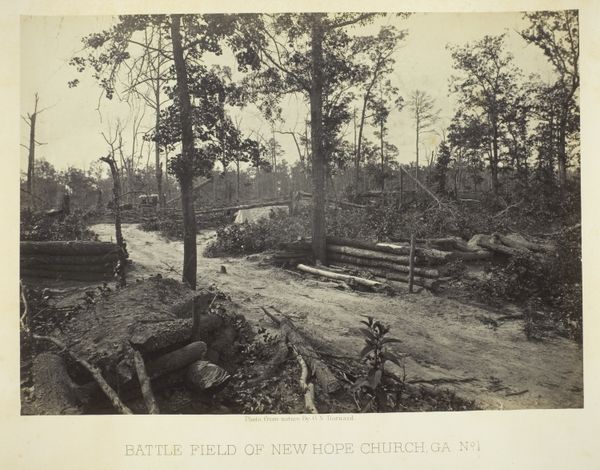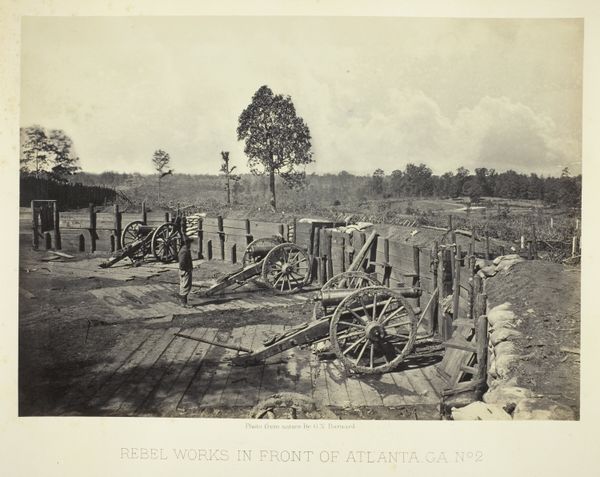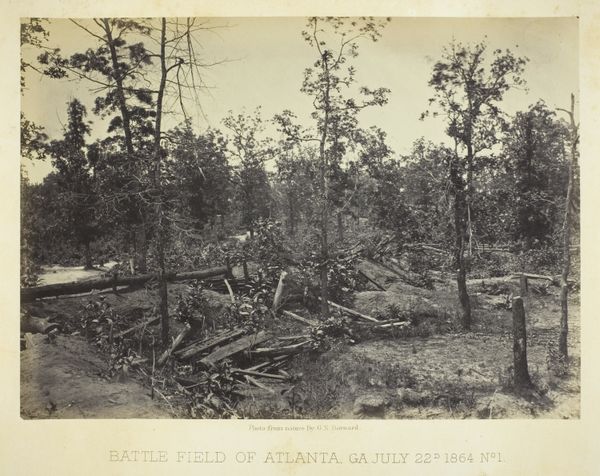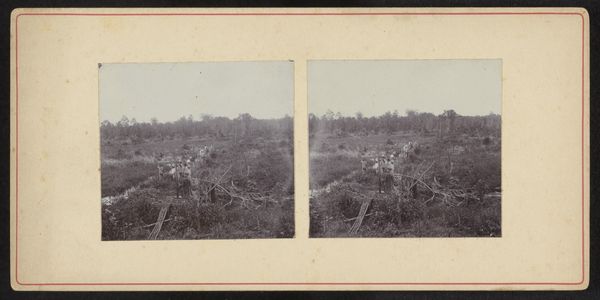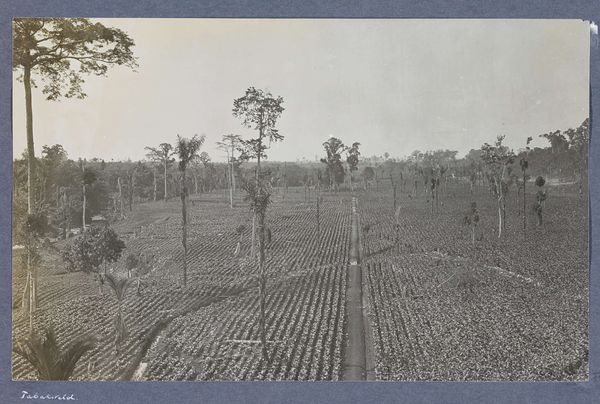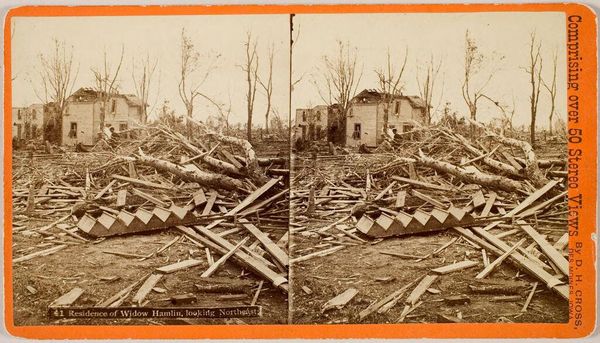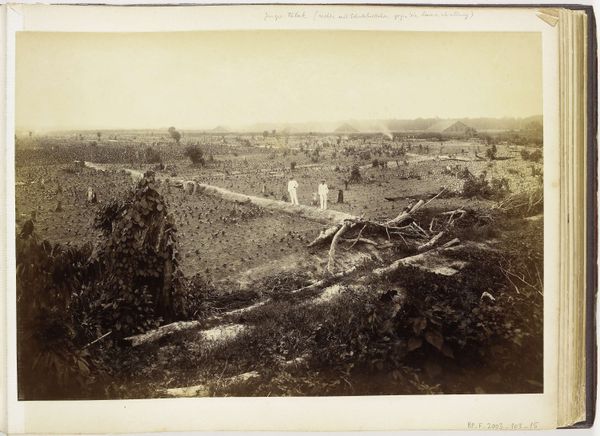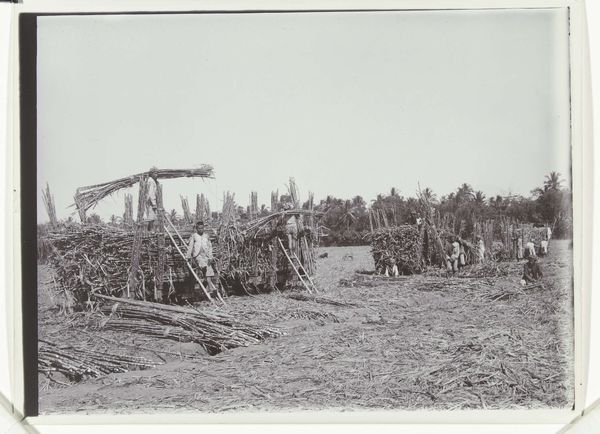
print, daguerreotype, photography
#
16_19th-century
# print
#
war
#
landscape
#
daguerreotype
#
photography
#
united-states
#
history-painting
#
realism
Dimensions: 25.4 × 35.7 cm (image/paper); 41 × 50.9 cm (album page)
Copyright: Public Domain
Editor: This daguerreotype, "The 'Hell Hole,' New Hope Church, GA" by George N. Barnard, dates to 1866. It's... stark. The shattered trees, the monochromatic palette. What really jumps out is the sense of complete devastation. What do you make of it? Curator: This image speaks volumes about the public memory and the visual rhetoric surrounding the Civil War. Think about it: photography during this era became a crucial tool for documenting and disseminating the realities of conflict. Editor: So, it's not just a picture of a destroyed forest? Curator: Precisely. Barnard wasn't merely recording; he was constructing a narrative. The deliberate title, "'Hell Hole,'" for instance, is charged with meaning. What associations does that evoke for you? Editor: Pain, suffering, the inferno. It definitely steers you towards a specific interpretation. The title makes you consider the politics of this destruction too. Curator: Exactly. It's crucial to remember the power dynamics inherent in these images. Who is being represented, and whose perspective is privileged? What did exhibiting photographs of war-torn landscapes accomplish? Editor: I hadn’t really considered the power of image selection and its public effect. This photo offers so much more to unpack! Curator: Indeed. By understanding the historical and cultural context in which these images were created and circulated, we gain valuable insights into the ways in which war is remembered and represented. Editor: Definitely. It really shifts how I view photography in that era. I now recognize the curatoral role within its impact and creation. Thanks for highlighting all these considerations!
Comments
No comments
Be the first to comment and join the conversation on the ultimate creative platform.



